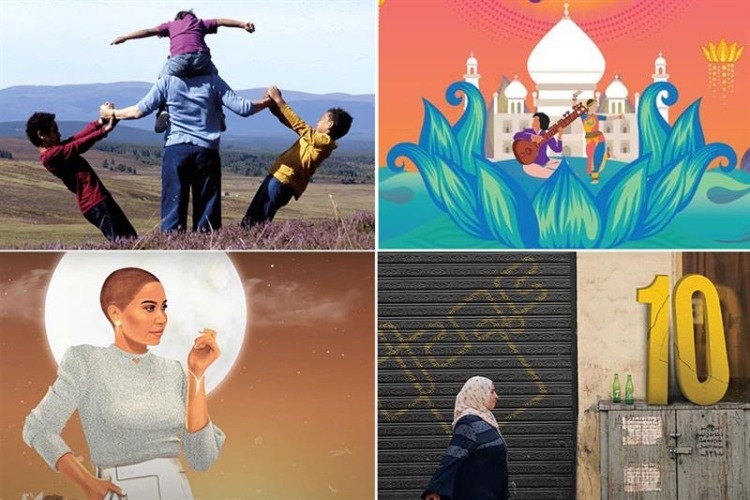Known as the beating heart of Cairo, Downtown is a neighborhood that has stood the test of time since its formation in the late 1800s by Khedive Ismail. Teeming with history and political significance, Cairo’s old city center still houses landmarks that act as time capsules of its rich past. A prime example is Cafe Riche, the meeting hub of the likes of Naguib Mahfouz as well as other artists, philosophers, and socialites. Even its streets carry an air of history as its intricately decorated old residences loom over passersby, representing the architectural gems of its distant past.
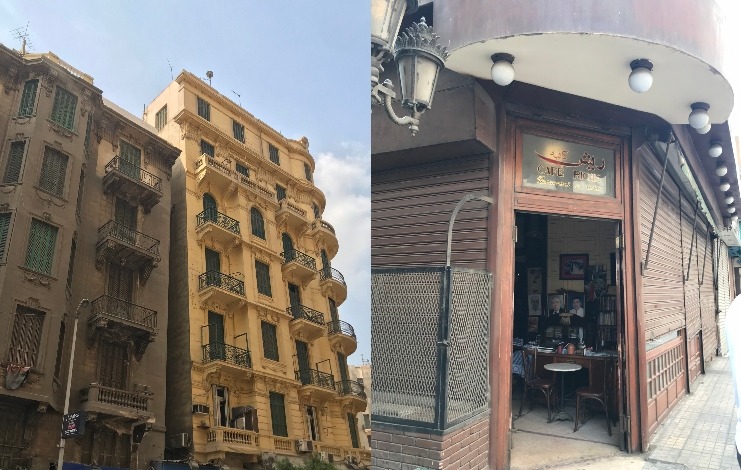
That is why to this day, despite its old age and crowdedness, the space still holds a strong gravitas, as its streets and alleys continue to pulsate with a lively nature unmatched in any other area. It is not just the locals crowding its streets; with the growing independent art scene taking over the district, more and more Cairenes from other neighborhoods are flocking to Downtown. The month of October alone boasts some of the biggest art events from Art D’Egypte’s CIAD, which houses unconventional modern art, to D-CAF, an art festival that includes a number of events happening all over Downtown Cairo.
What is D-CAF?
D-CAF, going on for 10 years now, is a 22-day art festival held in multiple locations Downtown. It was the brainchild of Karim Shafei, the festival’s director who gave life to this initiative with the goal of attracting Cairenes from all walks of life to Downtown. By renting out several run-down spaces and houses in several locations in the district and using them to stage new forms of art and expression, Shafei hoped to transform Downtown Cairo into a more eclectic space.
The Scoop team wanted to explore this phenomenon firsthand. We wanted to judge the exhibits for ourselves and see what meaning they bring to the nooks and crannies of Downtown and its people. So we headed out to see several exhibits that place a lens on VR, AI, and the digital sphere.
The Collective Digital Art Exhibition
Hidden among the narrow alleyways that fork out of Downtown’s main streets is the Kodak express, a pedestrian-only passageway nestled between old towering buildings. As we accessed the passageway from Abd El-Khalik Tharwat street, we had to cut through a narrow entrance marked with a koshk (local kiosk that sells snacks) on its left and a store selling sunglasses on its right.
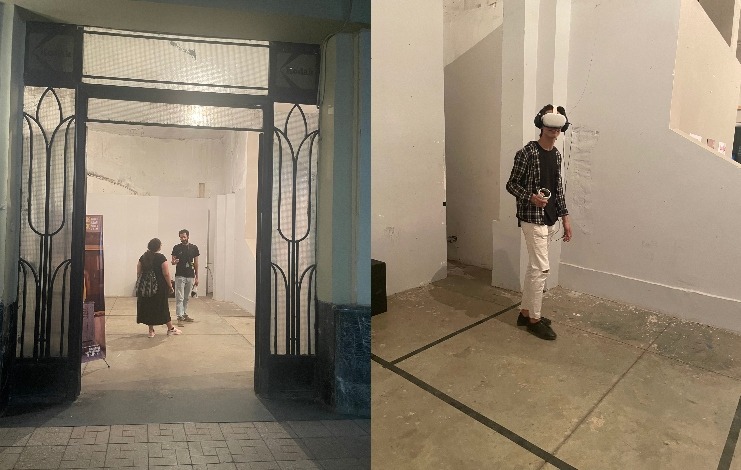
We had to walk the entire length of the passageway until we were faced with a brightly lit open-faced spacious room. Two white VR headsets hung from the beige ceiling, flailing about lifelessly and on the other end of the room, a man’s arm swooshed in the air as he hit a figurative ball during a virtual game of ping pong. Other visitors stood idly, watching and waiting their turn to enter the immersive world. To the naked eye, one would not claim this to be an art space as no paintings fill its walls or statues mark its center. That is because the art in this room is from another realm, represented digitally and only accessed through certain channels either a VR headset or the flickering monitor of a computer screen.
Entering Into The World Of VR and AI
To experience digital art, we had to enter the virtual world. Abanos, an alternate world created by Egyptian artist Ahmed Nader was the first art piece we visited virtually. Shock and confusion made up the emotional cocktail of our initial impression of this new reality. In this strange world, you will be standing on a long pathway surrounded by naked Renaissance-like figures of all sizes floating about around you with tortured looks on their faces. Everywhere you turn, more surprises await from random towering multicolored archways of red, blue, green, and orange to a crawling seaweed-looking object. Taking off the headset, we all needed a minute to recalibrate our minds to our current, calmer, simpler reality.
Going for a less immersive yet equally shocking digital experience, we headed to Egyptian artist Omar Kamal’s “Text to image” exhibit which was represented by a man sitting behind a computer. Today, art no longer is restricted to the human touch, AI can also hold the figurative paintbrush. Heading to the table, the man let us sit in front of the laptop and instructed us to type up any word that comes to mind. The concept behind this technology is that the AI would transform whatever we type up into a digital art piece. To try it out, we typed two words, sea and trees. All of a sudden, on the screen, appeared a beautiful illustration of glistening blue waters surrounding an island crowded with trees. The AI literally made an entire illustration in mere minutes.
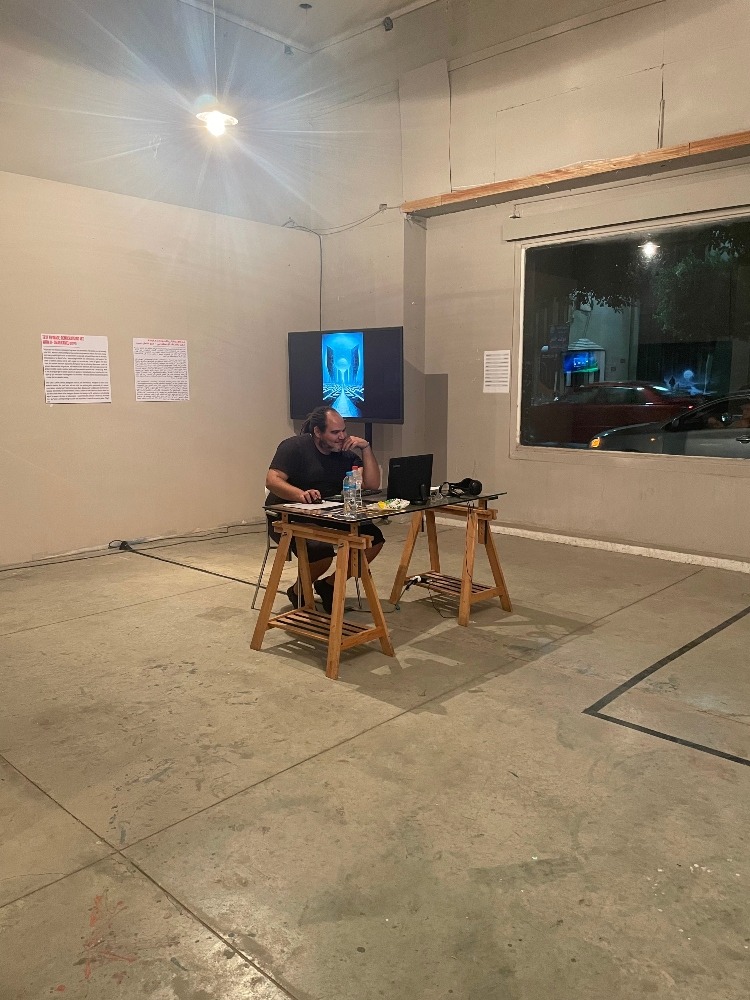
Trying out both exhibits forced us to take moment to pause and reflect. We didn’t expect technology to have reached this stage and we wanted to see if other visitors felt the same way, so we reverted our attention to the people within the room.
The People
Looking around, the exhibit was a magnet for a specific array of people, a niche audience mainly in their 30s, dressed in semi-formal attire. The men were clean-shaven in neatly ironed buttoned-up shirts while the women dressed in colorful skirts and dresses, their clothes a mirror of their artistic inclinations. When speaking to some of them, we noticed a general positive response towards the exhibit and digital art in general.
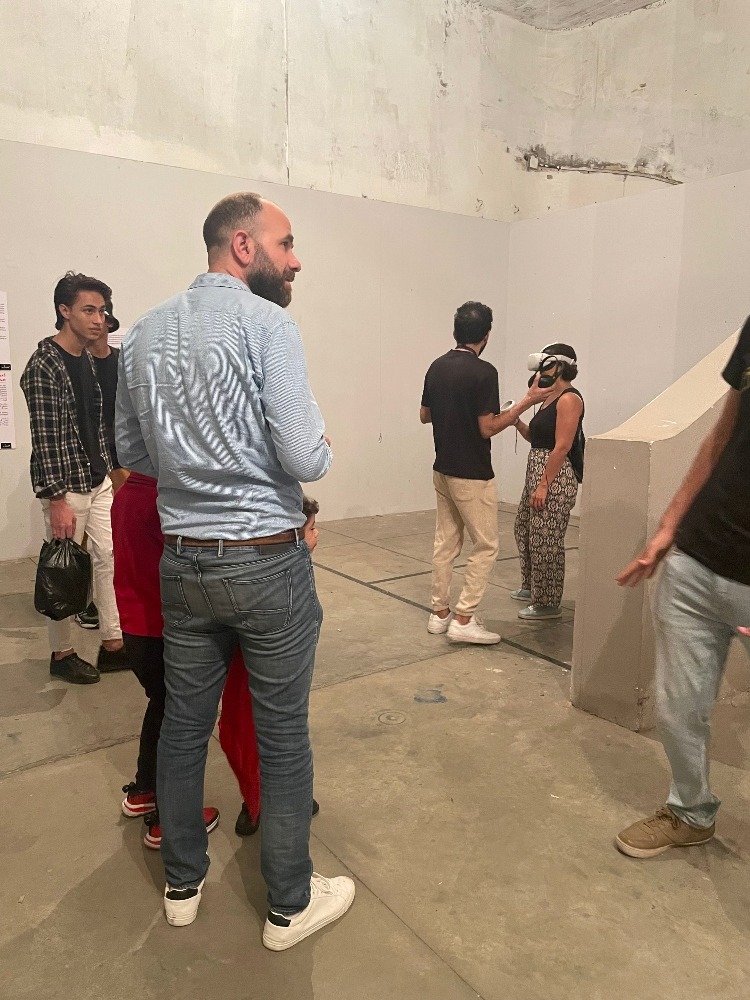
For example, during a conversation with Azza Al Hassan, a bubbly extroverted Kuwaiti cultural consultant, she expressed her love for the Abanos experience and how these out-of-the-box worlds that shatter one’s expectations are an exciting new way to express art. Ahmed Marei, a pilot and father of two, also expressed the same positive recognition. As a pilot, he mentioned how VR technology plays a big role in his life and he’s excited to see it delving into the art world.
These spaces representative of D-CAF, housed in Downtown’s warehouses and run-down buildings, do not just showcase new art, they also attract a new segment of individuals into its world. Some entered the space due to the mere coincidence of noticing it from the glass pane window. Others already knew of the event from their social circles and acquaintances, wherein, to them, it was just another event marking their already filled calendars. Yet, to the outside world that beats to a different tune, the event is more hidden and concealed.
The World Outside D-CAF
Taking a look outside, locals continue to go about their day. If we slowly pan out from the exhibit and begin to step back, we’ll notice a family sitting on one of the thin benches outside the entrance to the VR exhibit, enjoying the fresh air.
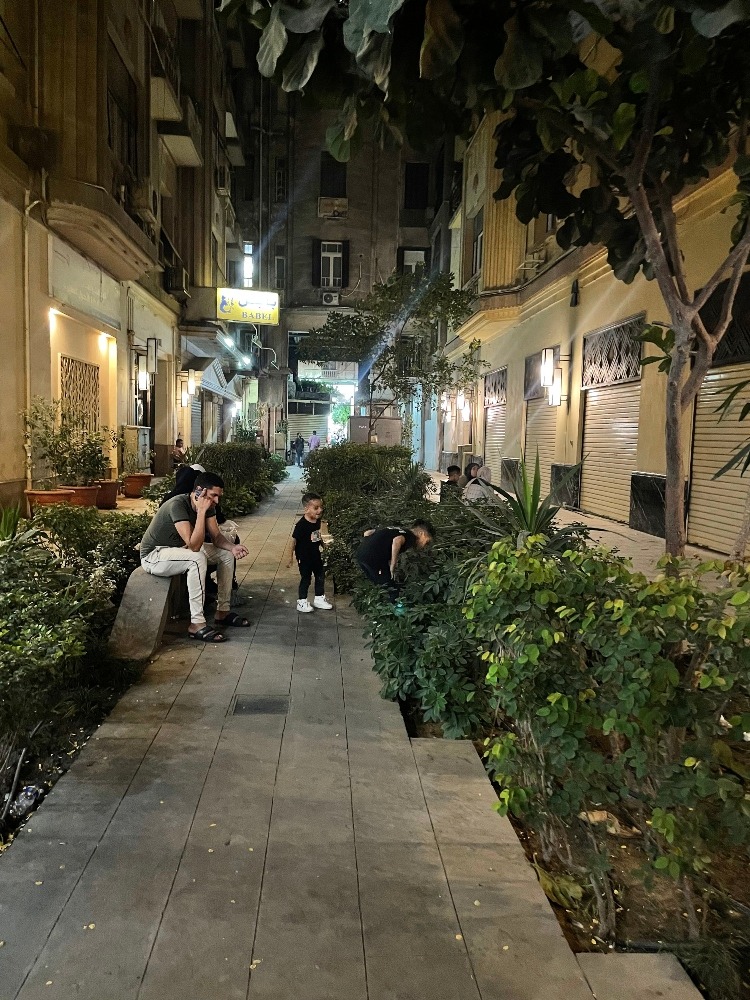
Further back, we’ll see the man at the koshk at the entrance of the Kodak Express as he continues to sell snacks and ice cold drinks to thirsty customers. If we zoom out even further and take a birds-eye view of the streets, streams of pedestrians, laughing and chatting, glancing at display windows crowded with extravagant antiques or dusty books will continue to boast the lively energy of Downtown. Today, one cannot help but notice Downtown’s new identity as a microcosm and blend of the old and the new.
The two worlds are there, co-existing, the avant-garde art enthusiasts and the locals who go about their day. Over time, however, one wonders if there will be a shift in the social fabric of this monumental Cairene district. If a new identity will arise and the Downtown Cairo we know and love will transform. With such a constantly fluctuating district, what can be said is that only time will tell.


